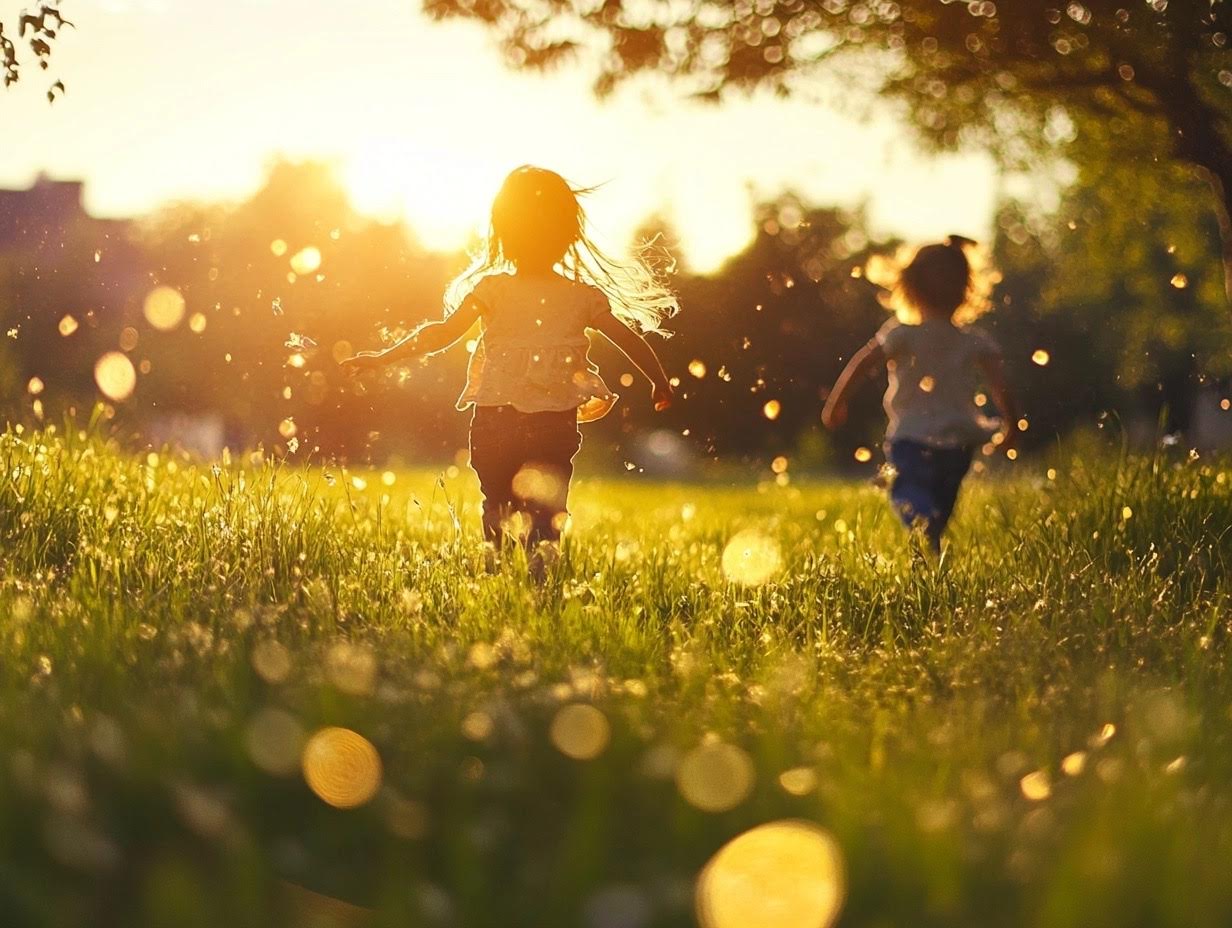The Grass Is Greener When It’s Real
Even Southern California Can Grow Grasses for Children

Let’s take a moment to talk about the joys of natural grass for children.
Real grass has the smell of Earth, of life, of renewal. Walking on real grass is pleasant and grounding; it can tether you to a place. Real (untreated) grass contains a multitude of life. Children and adults, too, can find worms, watch roly-polies, and chase butterflies from blade to blade. On a hot day, real grass stays cooler. Grass also traps pollution, returning fresh oxygen to the air.
Fake grass, which does none of these lovely things, creates problems for human health and the environment. Fake grass is made from polypropylene, a petroleum-based plastic material. Polypropylene is advertised as safe and durable, but it sheds microplastics – tiny plastic particles coated with toxic chemicals that contaminate our air, water, soil, and bodies. European researchers found that microplastics from artificial grass make up 15% of plastic pollution in marine waterways. A turf field sheds 10 percent of its fibers annually as microplastics. Synthetic grass also releases volatile organic chemicals (VOCs) into the atmosphere, or “off gases.” For small children with mouths and noses closer to ground level, this can cause breathing problems and is linked to some kinds of cancer. Our children’s air should not be polluted by the ground they play on.
In contrast with real grass, fake grass gets hotter on a sunny day and creates more pollution. On a 98-degree day, fake grass can reach over 200 degrees. This hot, plastic surface is dangerous to tiny feet and curious hands. Toddlers explore the ground by jumping, crawling, running, and sitting (story time, anyone?). They often walk barefoot. When there is real grass, walking barefoot can be beneficial as putting your feet into the ground or earth (grounding) has been shown to reduce inflammation and decrease time for wound healing. Putting your feet on hot plastic is a recipe for turf burns and the uptake of toxic chemicals through the skin. One of these chemicals, lead, is used in green pigment to give some fake grass a vibrant, “real” green color. Lead is neurotoxic, and no level has been proven safe.
Other toxic chemicals that can be found in fake grass are those commonly used in plastic manufacturing including BPA, PFAS, and phthalates. Plastic and plastic additives can disrupt normal hormone function in young children, contributing to early puberty in girls and declining sperm counts in boys. Since the 1980s, the amount of plastic in our environment has doubled, which means it’s more important than ever to reduce the exposure our little ones have to petroleum-based products. It is not the time to get laissez-faire and think, “It’s just a little bit.” It’s just a little bit of plastic on the string cheese, it’s just a little bit of plastic on their toy truck (that they sometimes mouth), it’s just a little bit of plastic in the yard.
If our schools, communities, and landscaping professionals can do one thing to positively impact children’s health and the health of the environment, it is to plant grass. Even in Southern California, some native grasses require little water and offer the benefits of real grass.
The Los Angeles Times offers these five low-water grasses as alternatives for those living in Southern California:
1. UC Verde Buffalo Grass
2. Dune sedge
3. Native California bent grass
4. Yarrow
5. Native Mow Free
The small decisions we make in our yards and communities can positively affect the environment and make the world a safer place. What joy it could bring to plant grass and watch the world bloom.
Our children should be able to run barefoot on the Earth’s surface.
